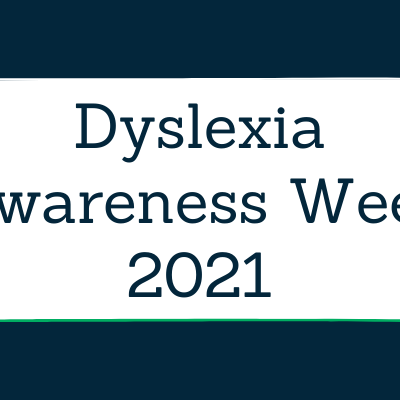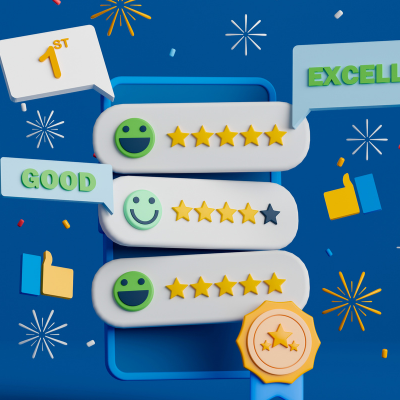Dyslexia Awareness Week 2021 takes place from October 4 to 10 and World Dyslexia Awareness Day on October 7.
Our MERJE Together pledge states that we are passionate about empowering every individual to thrive and perform to the best of their ability in their working environment, whether that be inside our own organisation or in the workplaces of our clients and wider businesses.
Bearing this in mind, we wanted to discuss the importance and benefits of employing people with dyslexia and help workplaces in understanding the adjustments that can be made to ensure your company is inclusive and accessible.
The Facts
Dyslexia is a common learning difficulty that can cause problems with reading, writing and spelling, but by no means affects an individual’s intelligence. According to government data, 6.3 million people have dyslexia, meaning that they represent a relatively high proportion of the workforce.
Around 10% of the UK population have dyslexia
Despite its prevalence, dyslexia has been stigmatised in previous years but, happily, is now being regarded in a new light. This is because, while many companies aim to hire employees from various races, backgrounds and walks of life, it is equally as important to hire neurodiverse talent as well. Neurodiversity is a concept where disabilities, such as dyslexia, are viewed simply as any other human variation as opposed to a deficiency.
As a result, employers are increasingly learning to recognise the benefits of a dyslexic brain and the value people with dyslexia can add to the workplace.
Advantages include being:
-
Innovative, with a strong creative drive
-
Persistent and conscientious
-
Able to quickly grasp new concepts
-
Adept at spotting patterns and connections which others might miss
-
Great puzzle solvers
In short, dyslexia should, moving forwards, be regarded as less of a learning disability and more a learning difference, and at that, one which is celebrated and embraced.
Neurodiverse employees are a staggering 30% to 50% more productive than neurotypical people
– Harvard Business Review, JP Morgan
Developing a workplace culture where dyslexic individuals feel secure and confident can boost morale while giving people the chance to thrive. It can also elevate loyalty and motivation, while making the working environment a less stressful place to be.
How to create a dyslexia inclusive workplace:
-
Publishing company newsletters and communications in multiple formats, including audio, large print and taking the time to incorporate visuals and graphics where possible
-
Allowing employees to have a range of page background colours and easy to read fonts on their work computers
-
Assisting with organisational skills, time management and asking them what kinds of tasks they feel confident completing and which they may need extended deadlines for. This is where training or mentoring can help
-
Using supportive software such as spell checkers, word prediction and voice recognition, so that they can hear what others would read
-
Encouraging screen breaks to aid and maintain concentration levels
-
Understanding that there may be some employees who are hesitant to disclose that they have dyslexia, perhaps because they struggle with it or are embarrassed. The best way to support employees is to be open-minded and establish a safe and supportive culture
-
Making sure that meeting material is distributed well before it takes place. Someone with dyslexia might become overwhelmed when receiving a document to review and discuss on the spot, so be prepared and deliver important documents in advance.
What you need to know about discrimination
As dyslexia is classed as a disability under the Equality Act 2010, it’s against the law to discriminate against people who have it in the workplace. Simply put, discriminating against someone with dyslexia in the workplace means that you have not supplied the correct means to allow them to fulfil their role.
Most adjustments are easy to implement and, when addressed, will enable individuals with dyslexia to operate at full capacity. This is why there’s no excuse for businesses not to implement the proper processes and operations to eliminate discrimination and be accessible to all.
How to avoid discrimination
Many workplaces discriminate without even realising so it’s worth recognising the pitfalls to avoid getting into hot water.
Job ads: Audio and visual ads will make you stand out among potential candidates. Write them in concise English and avoid using jargon. Short paragraphs and bullet points will make it easier for dyslexic people to read and understand
Testing: If you’re running tests as part of your hiring process, apply assistive options, such as spelling and grammar checkers. Software like Microsoft Word allows people to change the colour of the page they’re working on. Dyslexic friendly fonts like Read Regular also allow people to digest information more easily
Interviews: Asking overly complicated questions may confuse someone with dyslexia during an interview. Instead, think of this meeting as a fact finding mission and ask direct and straightforward questions. Where possible, use visual aids such as slides to share ideas and keep the overall pace measured and calm.
It’s worth remembering that individuals with neurodiverse conditions, such as dyslexia, bring a wealth of skills and talent to any organisation. As an employer, it’s important that you create an inclusive environment where they can thrive.
Read more about neurodiversity in our conversation with award winning barrister and workplace diversity, social mobility and law expert, Sally Penni MBE.
If you would like to learn more about cultivating a suitable workplace for people with neurodiverse conditions, please contact our team.







